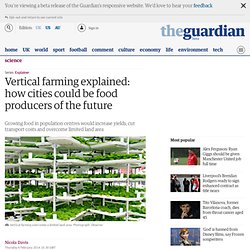

Permaculture-jardiner " à l'ancienne"-élevage et techniques. Le vélo est l'arme tranquille de la révolution écologique. Plus d’une centaine d’amoureux de la petite reine de tous âges, beaucoup de militants, de ceux qui font la « vélorution » en deux roues tous les premiers samedis du mois dans les rues de Paris pour réclamer plus d’espace, se sont déplacés, la semainer dernière, à la Maison du vélo, près de la Bastille, à Paris.

Dehors, sur la chaussée, plein de vélos sagement garés. Comme dans son essai « poil à gratter », Le pouvoir de la pédale, au style drôle et léger, le journaliste-blogueur spécialiste des transports, d’urbanisme et des modes de vie, Olivier Razemon est invité à raconter comment le vélo pourrait transformer nos sociétés cabossées. - Olivier Razemon - Les participants se sont installés dans l’atelier, entre pneus pendouillant au plafond, fourches, guidons, clés et chaînes de toutes tailles méticuleusement bien classés. No ground? Use containers: Journey to Forever organic garden. You can grow plants in virtually anything that holds some soil and has holes in the bottom for drainage.

It's only bounded by your imagination -- a chance for some really creative recycling. We use old bathtubs, 20-litre plastic containers with the tops cut off, baskets of various sizes lined with garbage bags to hold the water in, milk cartons for seedlings, anything that comes to hand. We almost used some dumped toilet bowls, only we didn't like the color (pink). Grow a pillar of vegetables -- 12 square feet of growing area on only 1.2 sq ft of ground. See Growing columns. We stuck three sprigs of Creeping Buttercup in a gaily-painted enamel Chinese chamber pot with some holes drilled in the bottom.
Container gardening resources Gardening in Containers: Growing in Small and Soilless Spaces, US National Gardening Association, Growing Ideas Classroom Projects, 2003 -- Detailed practical guide online, designed for teachers to use in school gardening projects, useful for anyone. City farms. Philip Forrer - Maraichage Forestier. Sistema de riego, sin energía, sin plástico, sin necesidad de sol. Parece demasiado bueno para ser verdad, pero existe desde hace miles de años, fue usado y se cree que desarrollado por primera vez en África, también se sabe que fue muy usado en China, es habitual en México hasta el día de hoy.

Permaculture et résilience locale: Comment Cuba a survécu au pic pétrolier. National Center for Home Food Preservation. Composting. Organic Urban Gardening. By SOPHIE MCADAM Planting lettuce at home in Spain.

This plant, and many more, can also be grown in window boxes and pots for urban gardening. Being self sufficient in a small space is much easier (and enjoyable) than you might think. Here are our top tips for anyone thinking of growing their own produce this spring. A few years ago, I knew nothing about gardening. Neighbors in the village would bring me gifts of fat orange carrots and juicy red tomatoes fresh from the earth, and I realized with horror that I had never tasted real food until then. Most people don´t have the luxury of a plot of land or big garden, but much of what I´ve learned can be applied to city center apartments with only a small balcony or yard.
Credit: generalamazo2000, Flickr Please note that all the methods explained here were chosen for their simplicity, but there are various approaches to urban gardening and other people may use different methods (and different plants) than those I cover here. Vertical farming explained: how cities could be food producers of the future. Populations are growing and cities are booming – but could we soon see skyscrapers turned into centres for crop production?

From Chicago warehouses to the south pole growth chamber in Antarctica, the concept of growing food indoors is catching on. Plant scientist Dr Erik Murchie, from the University of Nottingham, reveals how agriculture could be turned on its head. What is vertical farming? It's vertical because you are trying to grow more crops on a smaller land area and this usually means going upwards into buildings. It normally means that, instead of having a single layer of crops over a large land area, you have stacks of crops going upwards. Why do we need it? It is the need to increase crop yield without increasing the land area for crops. How high are we talking – skyscrapers?